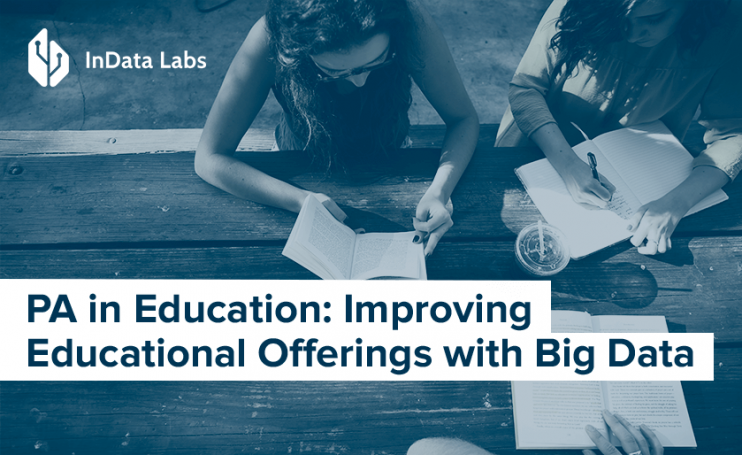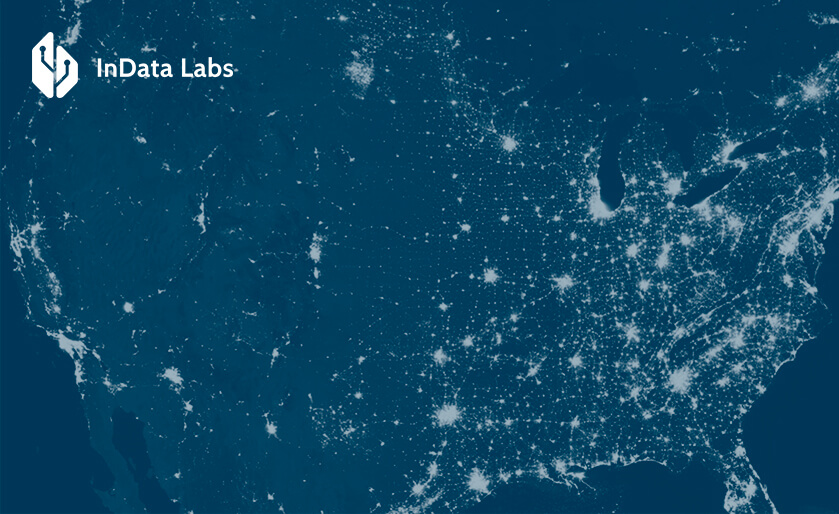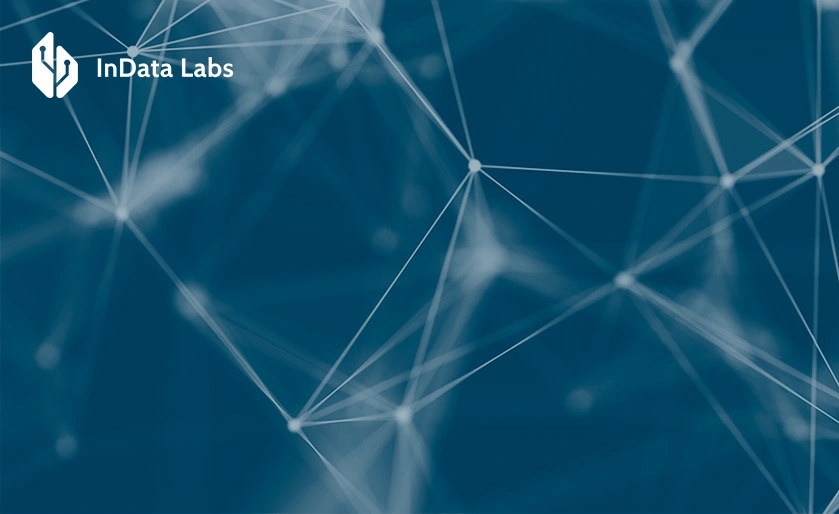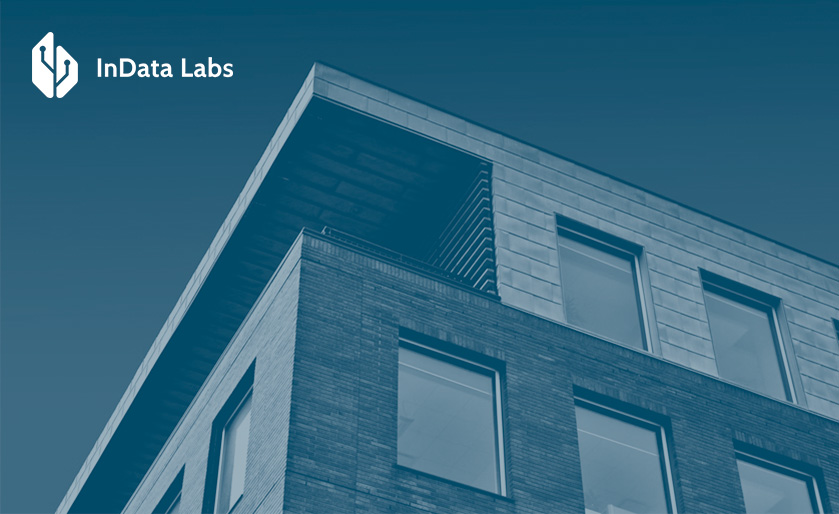The question is not if schools and colleges will give kids valuable offerings, but what would they give if they knew their students’ futures? Well, we certainly think so with the rise in the demand of predictive analytics in education.
Almost half the higher education institutions in the US use predictive analytics (PA) as a part of student learning to cultivate fresh opportunities for staff and students alike and enhance education quality to demonstrate ROIs for kids.
This free infographic explains the stats and benefits of artificial intelligence in education.
The reason why predictive analytics has laid itself out beyond generic businesses and seeped into the education sector is its accuracy to cater personalized learning experiences and sustaining enrollment.
But before we break down PA and big data’s role in academics, let’s understand what it is.
What is Predictive Analytics?
Short answer
You use historical data to identify patterns and the likelihood of future outcomes.
Long answer
PA is way more than knowing what has happened. It understands what has happened and where it will lead in the future.
Of course, you can’t tear down complex data into meaningful outcomes and trends right away. Advanced analytics uses data mining, statistical techniques, modeling, deep learning, machine learning, and artificial intelligence to make future predictions and uncover unknown events for your referral.
As far as education is concerned, students & staff leave digital footprints at various stages of their academics, such as class engagement, facility-use, attention span, feedback, online meetings, and grades, etc. Predictive analytics-based software for higher education can churn data, model them into organized outputs, and help with essential education trends for students and organizations’ success.
Examples of Predictive Analytics in Education
If you’re thinking predictive analytics in education sector can wait, or may, indeed, might be ineffective — here are some reasons why you should accept it:
#1 Helps Determine Causes of Absenteeism
Student attendance is one of the biggest factors in determining pay scale and ROIs for students.
With more students missing out on education, institutions can find out the potential cause of less attendance, be it health or financial concerns, and offer special assistance to them.
#2 Encourages Detailed and Personalized Attention
Everyone has their learning and grasping speed or, say, a student’s learning deficit. But you can’t rely on their expressions to know if they understand your course. Guesswork and intuition aren’t taking them to places either. Fortunately, predictive models let you identify kids who need more attention. Now you can deploy certain data metrics to detect their problems even before they arise and arrange special tutorials for better results.
#3 Reduces College Dropouts
The US’s dropout rate is at an all-time high at 5.4% for scalps aging between 16 to 24. While it reduces ROI for students, the cost of unemployment also burdens the working-class socially and financially.
Predictive analytics in higher education comes at great use should any department observe a surge in the dropout rate. They can then use the prediction results to promote consistent enrollment in the particular department.

Source: Unsplash
#4 Retains Students Amid Competition
The intense competition is putting educational institutions through immense retaining and development pressure. So it gets crucial for them to improve the graduation rates, enhance the quality of the study, and add visibility to educational progress rather than maximize semester enrollment.
PA helps with students’ retainment and development, pushing them to react to the value offering proactively.
#5 Analyses Student and Staff Feedback
The biggest problem with verbal or paper feedback is it is often buried under other opinions’ weight. So this is where the technology can pick all the online feedback sources and construct them into organized, actionable, and rich data to fine-tune the institution’s processes.
Finally, the institutions can also update themselves educationally and financially and work on gaps to provide quality value to the students and an inclusive environment for staff.
#6 Promotes Adaptive Learning
The evolving world needs an adaptive education system. With everything on record, lecturers and teachers can determine teaching gaps and customize their teaching techniques to make themselves heard and understood.
Similarly, predictive analytics in the education sector can exploit data on student learning gaps and push institutes to work on advanced learning experiences and build customized academic modules for individuals. As a result, adaptive learning ultimately offers a richer and informed campus experience.
#7 Motivates Involvement in Physical Activities
Educational institutes have earned the notoriety of ignoring the past achievements in sports and putting students in the wrong places. However, the technology takes historical data into account and helps schools and colleges motivate kids to pursue careers in the same.
You can replicate the same predictive algorithms and models for academics or extracurricular activities as well.
#8 Identifies Latest Educational Trends
Institutions need to identify what works and what doesn’t for them and students. As with any organizational practices, educational practices need ways to assess their teaching methods and their relevance in students’ progress. But these institutions have a hard time evaluating their systems’ efficiency with no particular data in hand.
Fortunately, predictive analytics helps identify the latest efficient trends and review responsiveness in the system. For example, it lets you monitor if online classes are more efficient than traditional classes or which grading system benefits the kids overall.
Once you’ve identified and applied suggested educational trends, you can then analyze ways to improve your teaching structure for the best learning experiences.

Source: Unsplash
Other Uses of Predictive Analytics in Education
- Customized attention to the underprivileged, minorities, and students of color.
- Detailed insights on key performance indicators and relevant suggestions for adaptation.
- Effective decision making at each stage of the education cycle.
- Increased student engagement and graduation rates at school for a secure future.
The Final Argument
Now that you know PA is a critical application of machine learning and artificial intelligence, you can best utilize it using predictive analytics software for higher education. It lets you capture real-time data for student progress and all the above mentioned benefits.
As the education system looks more into optimizing its processes and rescuing at-risk students from the danger of being left out, it’s only a matter of time when AI predictive analytics solutions are acknowledged and deployed by every institution.
We believe educational forecasting is no more a future as it already comes out as all blazing powerful assessment techniques.
Develop Predictive Analytics Solutions to Improve Student Outcomes
Schedule a call with our AI experts to explore your business and see how we can help.



